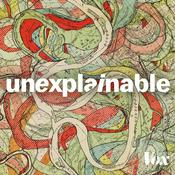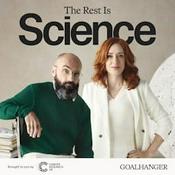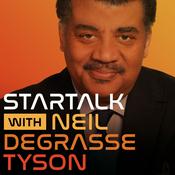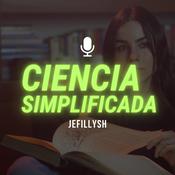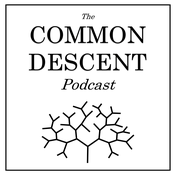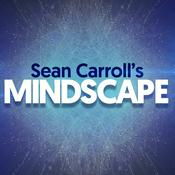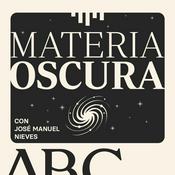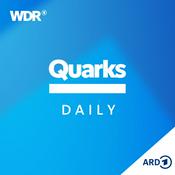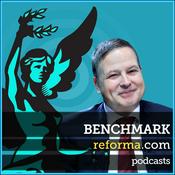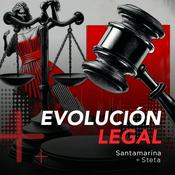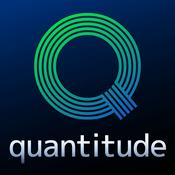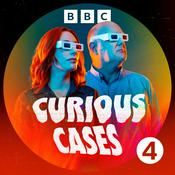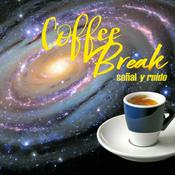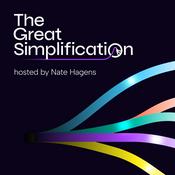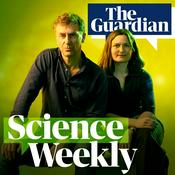Episodios disponibles
5 de 60
- 57. Arizona’s Porphyry Copper Story: Exploring the Tectonic and Geologic History of the Laramide ProvinceHost Maxwell Porter is joined by two experts to explore the geological and tectonic evolution of the iconic Laramide Porphyry Copper Province, focusing on its complex geodynamic history and the key exploration criteria that define this world-class copper belt. Our guests share complementary academic and industry perspectives, offering insights drawn from decades of research and field experience.The Geological Framework and Exploration vectors in the Globe-Miami DistrictOur first guest is Dr. Robert Lee. Robert earned his PhD at Oregon State University studying the El Salvador porphyry copper deposit in Chile. He then joined Freeport-McMoRan as a greenfields exploration geologist working across North America, the Philippines, and Europe. In 2014, he moved to UBC’s MDRU, leading and contributing to research projects on tools to vector towards economic ore deposits, across the Western Tethyan Belt to the Andes and British Columbia. Since 2022, Robert has been a Principal Geoscientist with BHP’s Generative Porphyry Copper team. His expertise centers on porphyry copper formation, mineral chemistry, and innovative tools for exploration, including zircon as a vector to ore.Tectonic controls on porphyry deposit formation in ArizonaOur second guest is Professor Thomas Lamont. Thomas is a structural geologist and petrologist whose work links tectonics, crustal evolution, and the formation of major ore systems. His research combines field mapping with advanced analytical tools, from EPMA and thermobarometry to isotopic and geochronological techniques. He completed his DPhil at the University of Oxford, investigating how the Cycladic Islands in Greece evolved from a compressional to an extensional tectonic regime. In a later postdoctoral role, he focused on the Laramide porphyry province of the southwestern United States, showing how flat-slab subduction drove water-fluxed melting and porphyry copper formation. Thomas now leads research into how subduction geometry shapes the thermal and mechanical state of the lithosphere and its mineral endowment in addition to other topics, as an assistant professor of Structural Geology and Tectonics at the University of Nevada, Las Vegas.Many thanks to VRIFY for sponsoring Season 5 of Discovery to Recovery.Theme music is Confluence by Eastwindseastwindsmusic.com--------59:47
- 56. The Future of Mining - Innovative Pathways to a Skilled WorkforceHost Anne Thompson explores the diverse and innovative methods being employed in Australia to build and retain the technical workforce in the mining industry. From attracting new talent, to supporting early career geoscientists, to training professionals from other industries - this episode might just change your perspective on what is possible.First up, Brendan Howard, General Manager for Technical Capability at Rio Tinto and a founder of the MiEX (Minerals Industry Experience) Program, addresses the mining sector’s shrinking and less diverse talent pipeline. The success of MiEX, a collaborative industry-led program, highlights the value of early engagement with undergraduate students. The pilot in January 2025 drew over 500 applicants for 69 places with 90% of participants expressing intent to pursue mining careers. New conversations are underway in North America to bring this exciting opportunity to more students.Richard Lilly, the University of Adelaide presents NExUS (National Exploration Undercover School) based in South Australia, which provides hands-on experience and essential training to geoscience students, bridging the gap between academic knowledge and industry requirements. NExUS combines technical learning with professional networking, using the South Australian Drill Core Library and nearby field sites to expose students to geophysics, core logging, and exploration through cover. Lilly is now stepping down after 10 years as Director, with the hope that this successful model will continue and be expanded to other jurisdictions to better prepare geoscientists for evolving exploration challenges.Lastly, Deng Ngang Deng, from Target Mining Resources, shares his inspiring journey from South Sudan to professional geoscientist in Western Australia. Deng was involved in establishing the Pan Africa Resource Reporting Code (PARC) and an invited plenary speaker at SEG 2024 in Namibia. At home in Australia, he has developed an innovative approach to training and employing geoscientists and other technical mining workers. Initiated during the pandemic, the company continues to expand and add to their portfolio of skills they train for, successfully filling a gap in mining recruitment.Many thanks to Avo Media for production support. Theme music is Confluence by Eastwindseastwindsmusic.com--------57:04
- 55. Diamonds in Transition: Markets, Mining and the FutureThe diamond industry has a rich and complex history, influenced by discoveries, geoscience and marketing. Join host Halley Keevil as she explores the industry’s history from the onset of modern diamond mining in Kimberley, South Africa in the 1800s, to the advent of laboratory grown diamonds and new platforms for marketing. Featured guest Eira Thomas is complemented by Natasha Oviatt and Reid Mackie, who all have deep knowledge and understanding of the diamond industry. Natasha Oviatt provides her perspective as a previous glacial geology specialist with De Beers Canada, discussing recent changes in the diamond mining industry, consumer preferences and marketing strategies through time, ESG issues, past and present economic downturns, and her opinions on lab-grown diamonds and the future of the natural diamond industry. Next, Reid Mackie, VP Diamond Marketing of Mountain Province Diamonds, discusses the diamond industry from a marketing perspective. He gives his opinions on the biggest trends in the history of the diamond industry and what he thinks are the biggest trends shaping its future. He also discusses market strategies for younger generations and how lab-grown diamonds are affecting the industry, as well as the shifts we are starting to see in the natural diamond mining industry. Lastly, renowned Canadian geologist Eira Thomas, widely known as the ‘Queen of Diamonds’, and previous CEO of Lucara Diamond, gives her opinions on the past, present, and future of the diamond industry. She discusses the reasons the industry is struggling at present and how lack of alignment in the supply chain drives volatility. She talks about the advent of lab-grown diamonds, the intrinsic value of natural diamonds, and the public perception of the industry. She also discusses how advances in technology, including her new rough diamond digital marketplace, Clara, are revolutionizing the diamond mining industry. Theme music is Confluence by Eastwindseastwindsmusic.com--------1:03:02
- 54. The Bushveld - Decoding a Mega-magmatic Mineral SystemDive deep into a mega-magmatic mineral system — the Bushveld Complex with host Maxwell Porter. Max is joined by Professor Wolfgang Maier and Dr. Erin Thompson who share their insights on the geological setting, economic significance, and evolving scientific understanding of this world-class mineral province.Wolfgang Maier discusses the Bushveld Complex’s geological framework, its importance in today’s resource landscape, and the controversies surrounding models for its genesis — and how these models have shifted over time. Wolfgang Maier completed his PhD on the Bushveld at Rhodes University, South Africa in 1992. He taught igneous petrology and economic geology at the Universities of Port Elizabeth, Pretoria (South Africa), Chicoutimi (Canada), UWA (Perth, Australia) and Oulu (Finland). He is now Professor for Ore Geology at Cardiff University, UK. Wolf’s research deals with petrological and geochemical processes in mafic-ultramafic igneous systems that contribute to our understanding of continental magmatism, mantle evolution, plate tectonics and the formation of magmatic ore deposits including PGE, Ni-Cu, Cr, and V-Ti-Fe deposits. Erin Thompson shares what drew her to study the northern limb, why it holds both geological and economic importance, and how magmatic architecture and mineralisation controls shape exploration strategies. She explains the once-overlooked yet powerful tool of Niggli numbers, and how geochemistry and isotope studies inform exploration and the future of the Northern Limb. Dr Erin Thompson has recently completed her PhD at the University of Leicester, which focused on constraining the magmatic controls on Ni-Cu-PGE mineralisation in the world-class Platreef deposit, northern limb of the Bushveld Complex. Her research was funded by Anglo American as part of the Northern Limb in 4D (NL4D) research consortium, which included researchers from across the UK at the University of Leicester, Cardiff University and Camborne School of Mines. She is now applying her background in magmatic processes and geochemistry in her new role as an exploration geologist.Theme music is Confluence by Eastwindseastwindsmusic.com--------52:45
- 53. Advancing Science and Discovery in Australia - SEG 2025Come explore geoscience innovation and collaboration in Australia with host Anne Thompson. We talk to researchers at three universities and one geologic survey - who are also all involved in the Society of Economic Geologists 2025 Conference in Brisbane, Queensland.Joins us to learn more about advancing science and discovery in Australia!SEG 2025Rick Valenta, chair of SEG 2025 provides a broad view of the work of the SMI (Sustainable Minerals Institute, University of Queensland) and how his role there as Director has influenced the conference. What makes minerals mineable includes all the other aspects that sometimes are neglected, including the impact of geoscience on society, and on individual communities. A recent highlight in Australia is the final release of the Queensland Deposit Atlas, a vast and comprehensive public data set. The Atlas was commissioned and funded by the Queensland Geologic Survey and completed by SMI. Vladimir Lisitsin provides an overview of the data and the many and varied mineral deposits found in Queensland. To get a flavour of what might be in the technical program I chatted with two keynote speakers. Angela Escolme, CODES, University of Tasmania provided insights into her work with a large collaborative project aimed at understanding the overprinted, transition zones in porphyry systems. Lastly, David Giles, University of South Australia delved into how a structural geologist got to be involved in creating the innovative coiled tubing drill rig and what it really means to be truly collaborative. Theme music is Confluence by Eastwindseastwindsmusic.com SEG 2025 is in Brisbane, Australia, September 26-29th. This will be a dynamic conference with cutting edge science, new discoveries, technology and more. Opportunities for networking and learning include several workshops and field trips before and after the event, relaxed social events and of course the conference itself. See you there!--------54:49
Más podcasts de Ciencias
Podcasts a la moda de Ciencias
Acerca de Discovery to Recovery
A podcast produced by the Society of Economic Geologists (SEG), bringing you geoscience and technology stories from the world of ore deposits. Season 3 sponsored by ALS Goldspot Discoveries.
Sitio web del podcastEscucha Discovery to Recovery, Planet Em y muchos más podcasts de todo el mundo con la aplicación de radio.net

Descarga la app gratuita: radio.net
- Añadir radios y podcasts a favoritos
- Transmisión por Wi-Fi y Bluetooth
- Carplay & Android Auto compatible
- Muchas otras funciones de la app
Descarga la app gratuita: radio.net
- Añadir radios y podcasts a favoritos
- Transmisión por Wi-Fi y Bluetooth
- Carplay & Android Auto compatible
- Muchas otras funciones de la app


Discovery to Recovery
Escanea el código,
Descarga la app,
Escucha.
Descarga la app,
Escucha.



